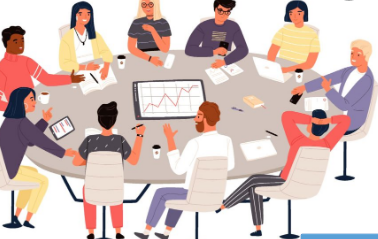
If you follow people like Hugh Macleod and Robert Scoble, etc., you know that we’re living in the era of “the Cluetrain.” I first read the Cluetrain Manifesto four-five years ago. One of the central ideas in the book is this: markets are conversations and companies by a large do not get that (even if their employees do). Traditional ways of mass-media marketing need to adapt or get out of the way. The keys are presenter imperatives, aren’t they?
What Cluetrain was talking about was the change in current company-to-consumer interactions, though their emphasis was on how technology and the web, among other things, were changing this interaction in a radical way. What the Cluetrain Manifesto is saying, at its heart, is that communication matters and that the way we think about organization-to-customer communication needs to change.
It’s all communication
Websites, intranets, message boards, email blasts, blogs, developer conferences, sales presentations, and CEO keynotes — it’s about communicating. It all matters. Whether it’s a blog, an e-newsletter, or a presentation, what audiences and customers yearn for from organizations is authenticity and transparency, simplicity, and a real human, emotion-without-the-BS approach to communicating. A real conversation…for a change.
The Cluetrain tenets — the “95 Theses” at the beginning of the book — speak largely to wired communications. But it’s all communication. While the “Theses” may not have been written with presentations in mind, many of the items fit nearly perfectly and can serve as good advice or reminders for how we need to connect and engage with our audiences today.
Below are ten items (in bold) I took from the list of “95 Theses” in the Cluetrain (my comments follow). I suggest purchasing the book, but you can get most of it free here.
“Markets consist of human beings, not demographic sectors.”
Markets are not abstractions, and neither are our audiences. They’re people worthy of our full attention and respect. If we can remember that it’s about them and not about us…we’re on the right path.
“Conversations among human beings sound human. They are conducted in a human voice.”
I don’t hate politicians and I don’t hate marketers…but I hate the way they talk. “Mission-critical, forward-looking value propositions….” People do not talk that way! Many corporate speakers have a special gift for the “blah-blah-blah.” Is anyone listening? Speeches and presentations do not have to be stuffy and dull, but neither do they need to be hyped-up and shallow — your audience is praying you’ll be different.
“Already, companies that speak in the language of the pitch, the dog-and-pony show, are no longer speaking to anyone.”
Even if your presentation is directly sales-related, you have to believe in your product (not the hype) deep down inside. I’m not talking about drinking the Kool-Aid kind of belief, I’m talking about believing in your product (your cause, research, etc.) as you believe in yourself. Speak to the audience like you respect them, like you think they are smart like you think they are interesting. Don’t be a TV commercial. Commercials more often than not insult us. And even when they’re clever, we don’t really care and soon forget because…they’re not real.
“Companies need to lighten up and take themselves less seriously. They need to get a sense of humor.”
The best presenters take their cause and their audience very seriously…but they do not take themselves too seriously. They are relaxed…they have nothing to hide. At that moment, nothing could be better than sharing time with the audience, and the audience feels that.
“Whether delivering information, opinions, perspectives, dissenting arguments or humorous asides, the human voice is typically open, natural, uncontrived.”
Your speaking does not have to be perfect. In fact, perfect speech and too much polish may alienate a crowd. It’s not real. Each case is different, but an open, natural, friendly, relax approach — away from the podium — is usually best. People pay more attention to a natural, open voice. And few things are more boring for a crowd than the reading of a long manuscript from a podium.
“By speaking in a language that is distant, uninviting, arrogant, they build walls to keep markets at bay.”
If you want your talk to fail, simply build a wall between you and your audience. There are many ways to do that: Speak in abstractions, stand in the dark, insult the competition, speak too long, create dreadful visuals, be evasive, and on and on.
“Learning to speak with a human voice is not a parlor trick. It can’t be picked up at some tony conference.”
You can learn a lot from presentation coaches and communication books, but this is not rocket science. We can be much better by simply looking at the presentation as an opportunity to have a conversation with others about something we care about. All the technique, training, and “PowerPoint” tricks are useless if the talk doesn’t come from your gut, from your heart and soul.
“The inflated self-important jargon you sling around — in the press, at your conferences — what’s that got to do with us?”
Never try to impress. It didn’t work in high school (lord knows I tried) and it won’t work with your audiences (or your markets) either. A good presentation is like a good blog: it’s transparent, unique, fresh, honest, authentic, and accurate even if not perfect.
“If you want us to talk to you, tell us something. Make it something interesting for a change.”
Most sales presentations are designed by a committee and sent to people in the field with scripts in the PowerPoint notes view. No wonder the presenter sounds distant and “corporate.”
“De-cloaking, getting personal: We are those markets. We want to talk to you.”
As the Cluetrain authors say, people “…do not want to talk to flacks and hucksters. They want to participate in the conversations…” The best presentations feel like a conversation.
Do you have other online examples of good presentations?